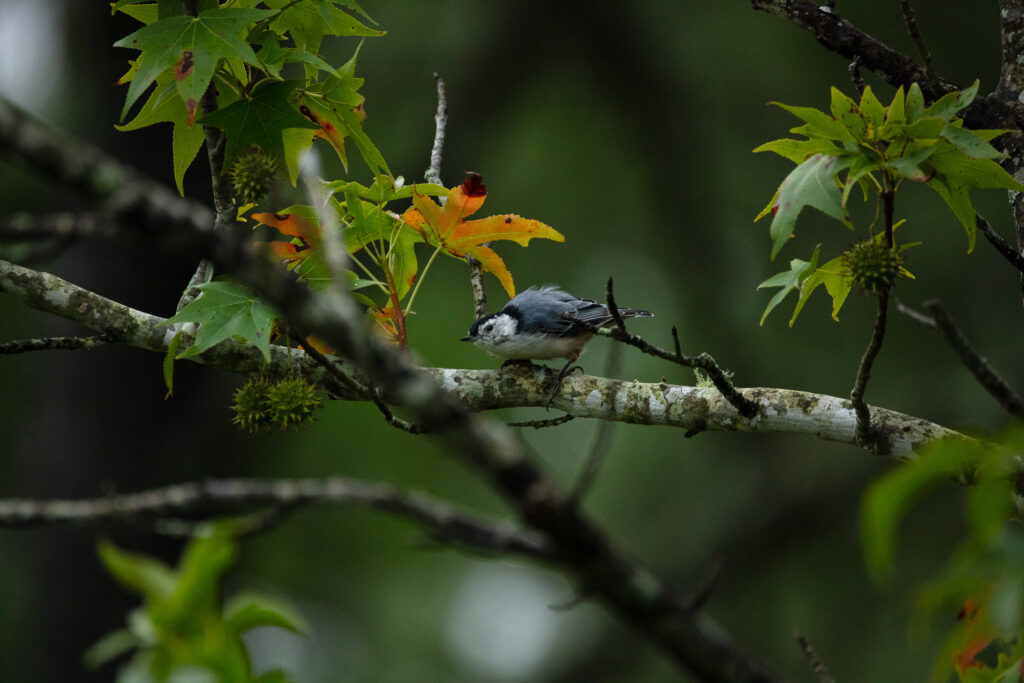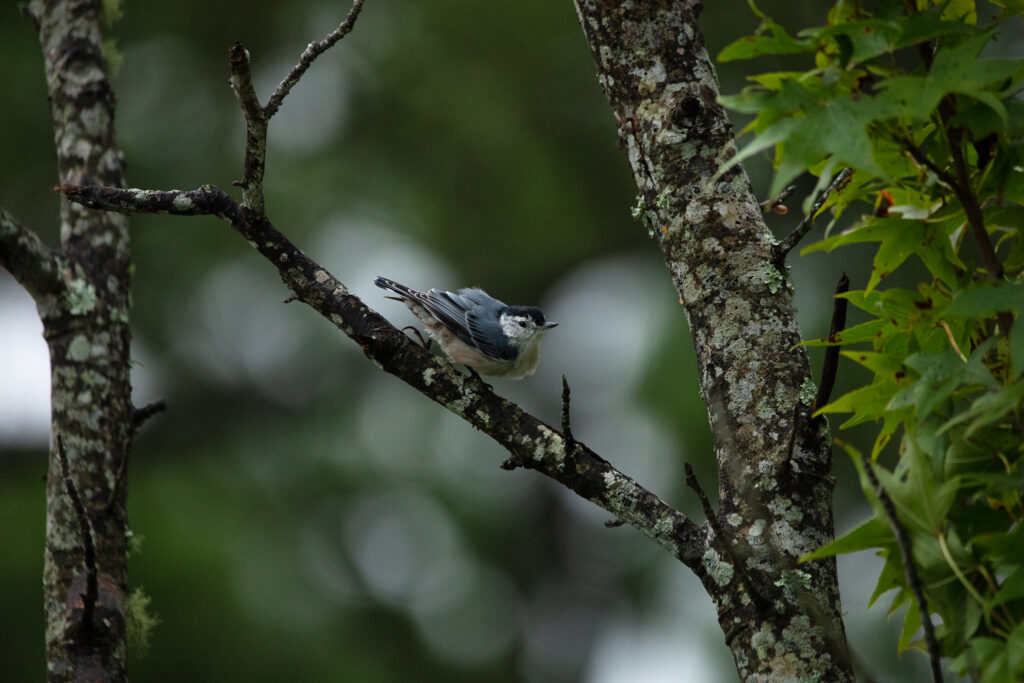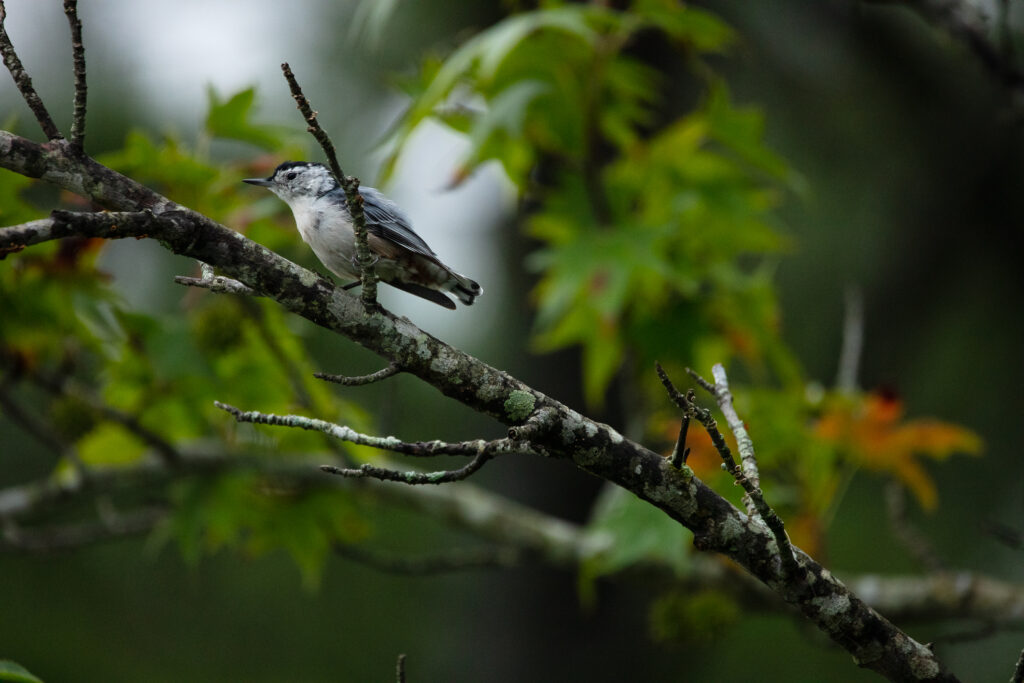Check out the White breasted Nuthatch I found at the Prairie Ridge Ecostation in Raleigh N.C. last week! These cool little birds are normally seen scurrying upside down along tree trunks so it’s a rare thing for me to catch one right-side-up.

The one thing that you’ll probably notice here in the first shot is this birds unique side profile. His lower beak is ever so slightly upturned, a characteristic of all 3 species of nuthatches found in North Carolina (White breasted, Brown headed & Red breasted).
This specialized bill shape helps the Nuthatch to pick out insects buried inside crevices of bark or branches.

A familiar visitor to our backyard feeders, the White breasted Nuthatch also dines on seeds, suet and nuts. They’re even known to store food in caches for later, especially in during the wintertime. Once again, that specialized bill comes in handy as they will stuff seeds back into the crevasses of tree bark that they had previously used for rooting out insects during the summer months.
Pretty neat huh?
🙂
Photos by @sally_siko of @birdwatching_nc on the fabulous full frame @canonusa
#5Ds







